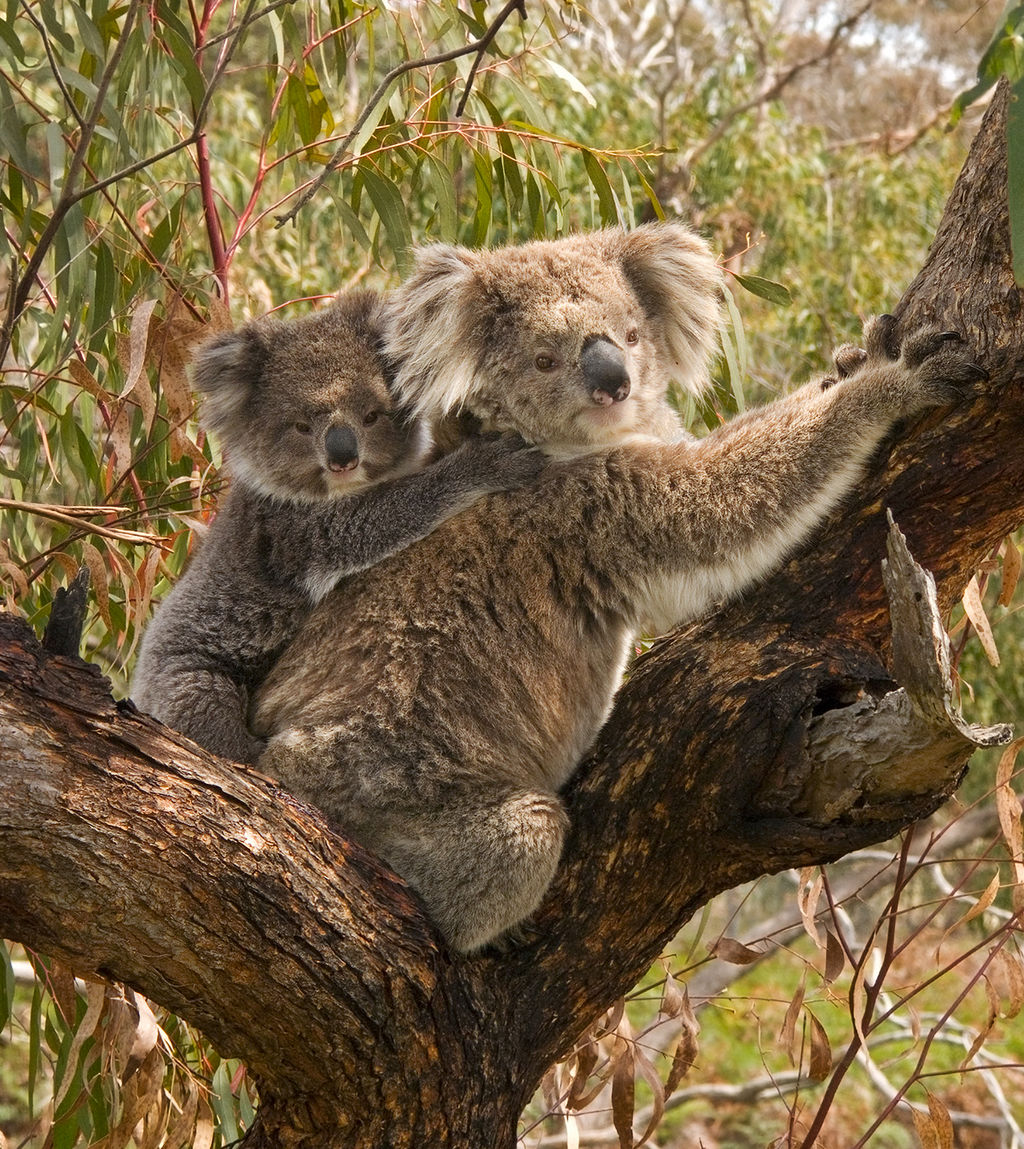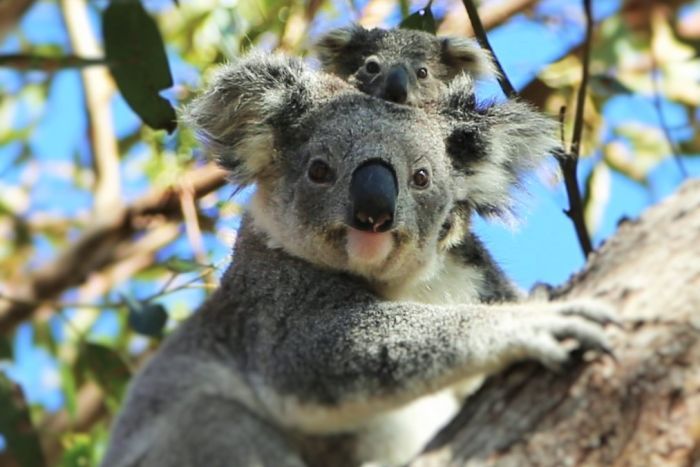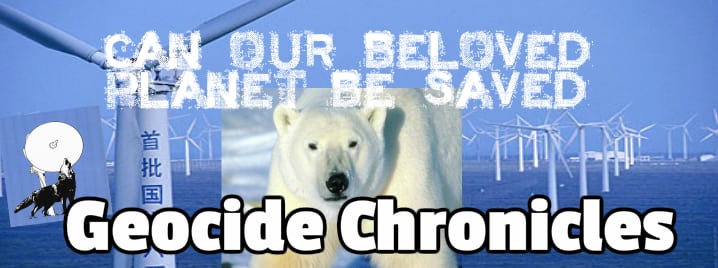[dropcap]T[/dropcap]hey’re cuddly. They’re terribly cute. And in Australia, they’re almost gone. Yes, we’re talking about the animal we often associate with the Land Down Under. The iconic koala is “functionally extinct” in the place it famously represents.koalas – Google Search
“Functionally extinct” means the population of a species has declined to the point where it can no longer play a significant role in the ecosystem or it can’t produce enough offspring to keep the species going.
Since 2010, the Australian Koala Foundation has been monitoring koala populations in the 128 Aussie federal electorates that encompass the species’ range. Today, not a single koala can be found in 41 of those electorates.
Koala habitat has drastically diminished as development increased throughout Australia. In addition, climate change is taking its toll in the form of droughts and heatwaves. For the koala to survive, something has to change.
All about the koala
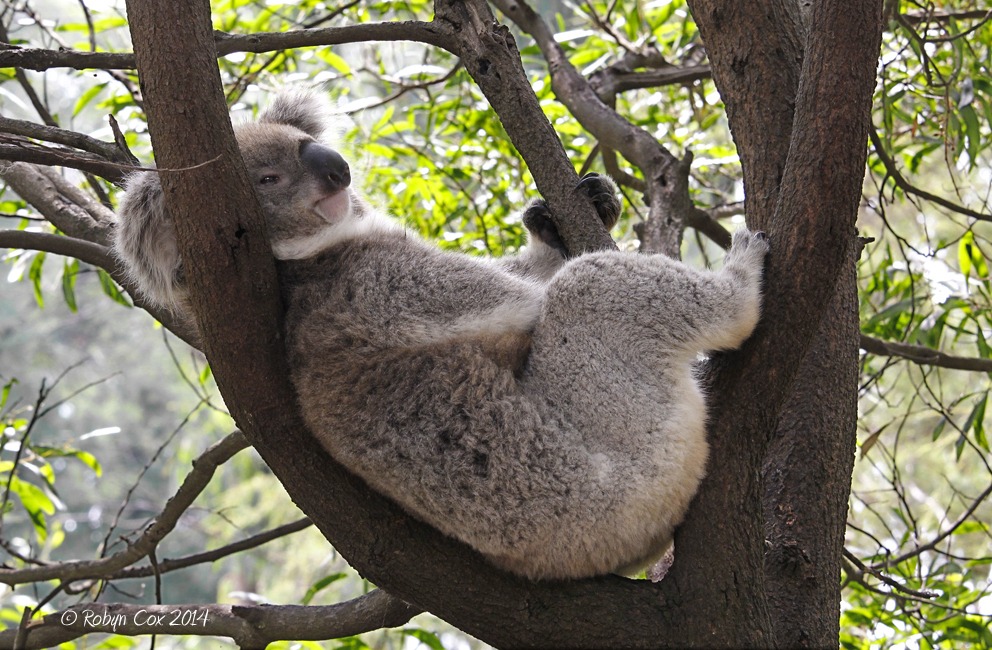
Koala’s don’t get much energy from gum leaves, so they have to take life at a relaxed pace – like Sloth Bears. This baby is at the Healesville Sanctuary. Specialising in native Australian animals, Healesville Sanctuary is one of the Zoos Victoria sites, located at Healesville in the Yarra Valley to the east of Melbourne. (Robyn Cox)
Although we often call them “koala bears,” that’s a misnomer. They are actually marsupials. Baby koalas, called “joeys,” travel in their mothers’ pouches, just like kangaroo babies do.
Koalas live in the eastern portion of mainland Australia, as well as on some islands off the southern and eastern coasts. Within Australia, you now only can find wild koalas in Queensland, New South Wales, Victoria and South Australia.
Why must animal defenders and ecologists always be sounding the alarms?
Where are the damn politicians, the governments tasked with preventing such catastrophes? How much more evidence do we need to see the global leadership, the current order, save for a handful of exceptions, is useless or worse, complicit in the tragedies and crimes we constantly try to avoid? In the immediate sense, the Koala catastrophe is an indictment of Australian society and its establishment.—The Editor
Koalas boost their ecosystem by eating the outermost and uppermost leaves of the eucalyptus tree, which helps the eucalyptus forest regenerate and spread. Koalas also keep the ground fertile for plant life by, well, pooping. Koala poop is a nutrient-filled fertilizer the animals naturally spread all over their habitat.
Koalas spend a good 18 to 20 hours a day snoozing up high in their beloved eucalyptus trees. It takes quite a bit of energy to digest eucalyptus leaves, which are highly fibrous and toxic to many animals (but not koalas). Sleeping helps koalas conserve energy that’s needed for digestion.
They get most of the water they need from the eucalyptus leaves they eat. Koalas require about 100 trees per animal to comfortably survive, which becomes a critical problem as deforestation increases due to development.
Koala numbers are dwindling
“The AKF thinks there are no more than 80,000 Koalas in Australia,” Australian Koala Foundation CEO Deborah Tabart said in a news release. “This is approximately 1 percent of the 8 million Koalas that were shot for fur and sent to London between 1890 and 1927.”
In fact, the Australian Koala Foundation thinks the number of remaining koalas could be as low as 43,000.
Legally, koalas are a protected species in Australia, and yet they’re still dying out. That’s because they are losing the habitat they need to survive. Almost 80 percent of the remaining koala habitat is on privately owned land.
That’s why the Australian Koala Foundation insists it’s long overdue for Australia to enact the Koala Protection Act, which focuses on protecting koala habitat to save the koala itself. The foundation says it knows precisely which trees are necessary to sustain the koala. So it proposes that if developers want to build in areas where such trees are present, their applications should be denied unless they can demonstrate their activities will be “benign to the landscape.”
Australia held its national election May 18, in which Prime Minister Scott Morrison, a conservative, won re-election against the Labor Party’s Bill Shorten. What that means for koala protection is anyone’s guess. But up to now, Morrison has not acted.
“The new Australian Government could swiftly put the Koala Protection Act in place,” according to the Australian Koala Foundation news release.
“Both parties say they want to protect the environment,” Tabart said in the release. “It would be a great way to start by protecting koala forests which cover 20 percent of our continent.”
It would indeed.
This May, Care2 is launching a campaign to protect endangered species. Join us to save these real-life fantastic beasts!
Appendices (Attached by the editor to make the coverage of this issue more comprehensive).
Appendix I
We often know who they are, the ones killing these species. This report by ABC.net.au spells it clearly. Posted [dropcap]A[/dropcap] gas company has been given federal approval to clear 54 hectares of koala habitat for new coal seam gas wells on Queensland’s Western Downs. QGC, which is owned by Shell, applied to drill 25 new wells near Dalby as part of project Anya. The company’s own reports submitted to the federal Environment Department said habitat “critical to the survival of the koala” would likely be affected. Australian Koala Foundation chief executive Deborah Tabart said the decision to allow any clearing in areas where koala populations were struggling was unacceptable. “I have written to minister Jackie Trad and the Premier in recent times on several occasions saying that not one single piece of koala habitat in Queensland should be allowed to be cut down,” she said. “Every industry wanting to go about it should be absolutely ensuring that they do not destroy the koala habitat.” Ms Tabart said the federal environmental act had failed koalas in Queensland. “The Environmental Protection and Biodiversity Act in my view has been a complete waste of time to protect koala habitat,” she said. QGC’s report compiled for the department in February 2015 said the development would encroach on the vulnerable animal’s territory. “Taking into account progressive rehabilitation of CSG wells shortly after commissioning, approximately 12.79ha of habitat critical to the survival of the koala will be impacted due to the proposed CSG development,” the application read. But the report said while about a third of the land slated for clearing was critical habitat, the impact on the vulnerable population would be minimal. “While the identified koala habitat values within [the site] is considered to be in good condition, the very low density of koalas combined with large home ranges within a geographically extensive intact remnant, will result in “no significant impact”,” the report read. A QGC spokesman said the company would create koala habitat in central Queensland to offset any damage. “All of QGC’s operations, including the development of wells, pipelines and access tracks, comply with Queensland’s strict environmental controls,” the spokesman said. “An area of 187 hectares within QGC’s biodiversity property in central Queensland will be set aside to offset any potential loss of habitat.” But Ms Tabart said that was pointless. “You get up to 70 and 80 per cent mortality once you move animals away from their homes,” she said. “It’s like saying to you tonight, ‘I’m going to knock your home down, no worries, I’ll build you another one, but just wait 20 years and in the meantime just wander around’.”
Mining company QGC given approval to clear critical koala habitat for CSG wells near Dalby
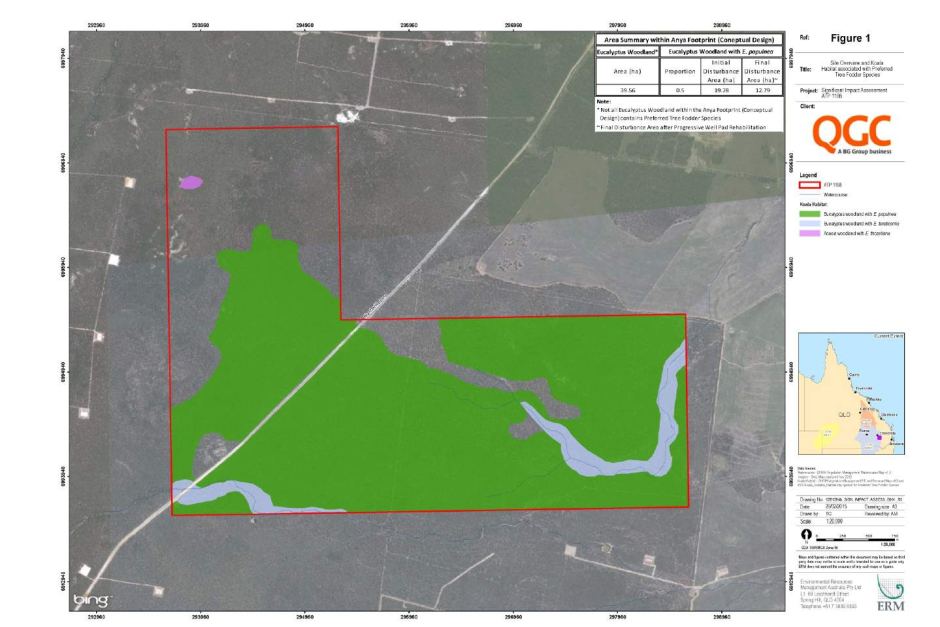
PHOTO: An image taken from the Significant Impact Assessment report showing the site overview. (Report: bg-group.com)Koala habitat to be created in central Queensland
Appendix II
Crunch time for koalas
Koala Crunch Time
In key parts of Australia, koalas are dying in big numbers. Are we prepared to compromise development to protect their natural habitat?
This post is part of a series on humans’ destruction of the natural world.
[/su_spoiler]![]()
![]() The Russian Peace Threat examines Russophobia, American Exceptionalism and other urgent topics
The Russian Peace Threat examines Russophobia, American Exceptionalism and other urgent topics



